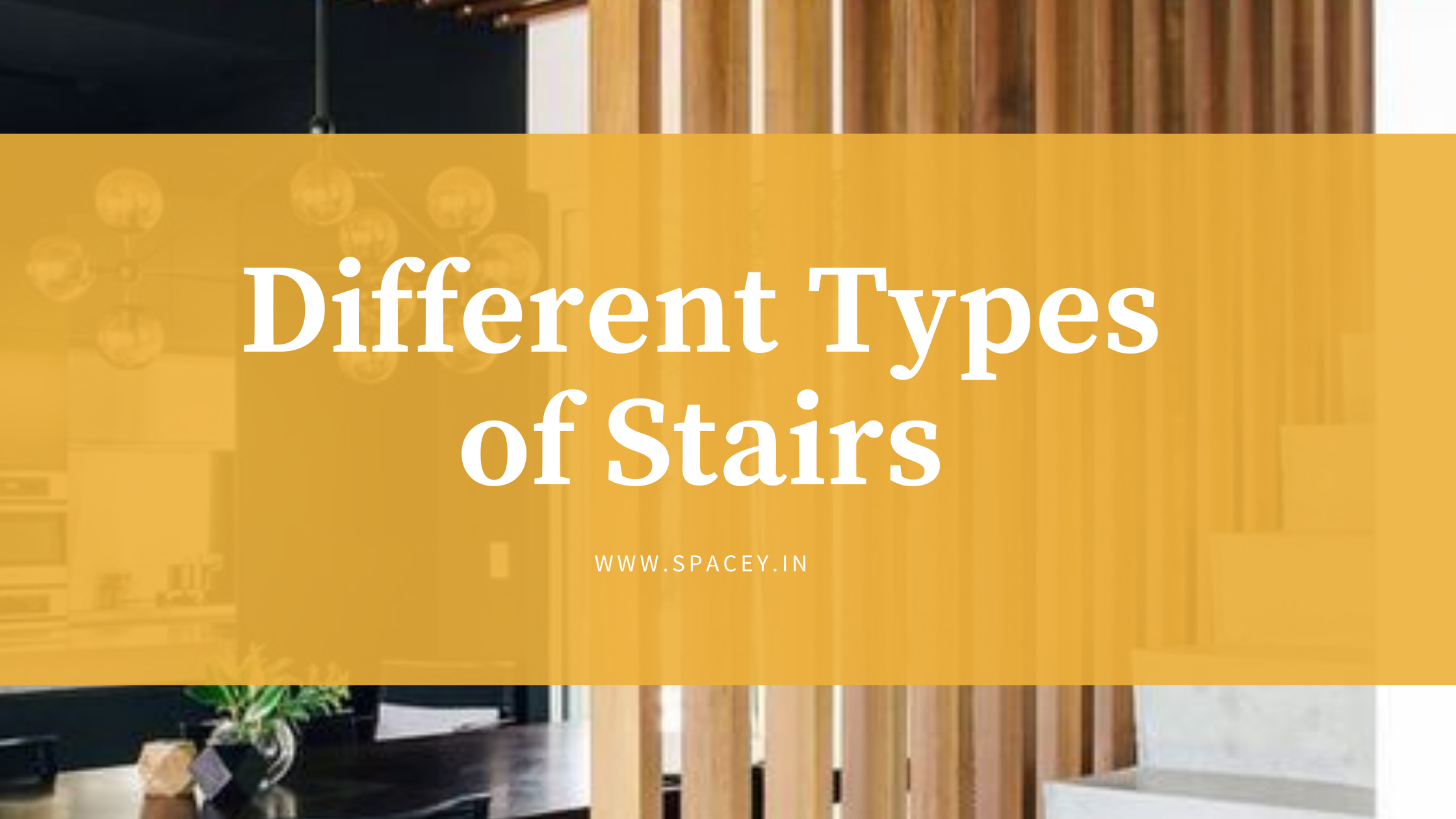
10 Different Types of Staircase Design
1. Straight Stairs
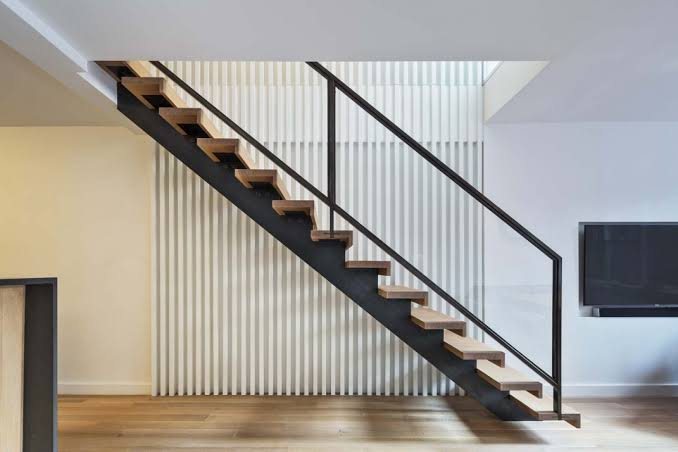
What are straight stairs?
Straight stairs are stairs without any changes in direction. They are certainly one of the most common types of stairs found in both residential and commercial properties. Below are examples of straight floating stairs made with a variety of stringer styles, railing types, and wood species.
What are straight stairs with a central landing?
On longer flights of stairs, a landing is inserted to break up the flight. Building codes require this for floor heights above 12 feet. Especially in commercial buildings, straight stairs often have platforms halfway up the run of the stairs.

Advantages of Straight Stairs:
- Straight stairs tend to be the easiest to go up and down, or, ascend/descend, as we say in the industry.
- They are typically the easiest to build, however, this depends a lot on the level of detail in the design.
- Straight stairs only need to be connected at the top and the bottom (no intermediate supporting structure is required).
- They work well with minimalist designed homes due to their inherent simplicity.
- By selecting thinner treads, open risers, and thin metal stringers, straight stairs can be made more transparent than other types of stairs, allowing less obstruction to the view beyond.
- No landing is required if the number of risers is kept under 16 or the overall vertical height is less than 12 feet.
- It’s relatively easy to build railings and handrails for straight stairs.
- Measuring for railings for straight stairs is simpler than for other stair designs.
Disadvantages of Straight Stairs:
- Straight stairs use up a fair amount of linear space, which has to be planned for in your design.
- Some of the other stair types create a privacy barrier between the floors of your home. Straight stairs do not offer this privacy.
- A stair 12-feet high requires a landing to break up the span. The addition of a landing will use up a lot more space and therefore these types of stairs are seldom used in residential construction. You will see these more frequently in large commercial buildings.
2. L Shaped Stairs

What is L shaped stairs?
The L shaped stair is a variation of the straight stair with a bend in some portion of the stair. This bend is usually achieved by adding a landing at the transition point. The bend is often 90 degrees; however, it does not have to be. If the landing is closer to the top or bottom of the stairs it is sometimes referred to as a long L stair or a quarter turn stair.
Advantages of L Shaped Stairs:
- L shaped stairs can be more visually interesting.
- They provide a visual barrier between floors so, they can add some privacy.
- L shaped stairs can help somewhat with sound transmission between floors if the stairs are contained within walls.
- Some believe they are safer than straight stairs as the central landing reduces the number of treads one could fall in a given flight.
- The landing can provide a place to stop and rest while ascending.
- They can be located in a corner of a room if this works better for your design.
Disadvantages of L Shaped Stairs:
- L shaped stairs are a bit more difficult to build than straight stairs.
- Support is typically required for the landing in an L type stair. Often, this is built into the surrounding walls so it goes unnoticed. In modern dwellings, however, it is usually desirable to open up space by leaving the stair structure visible. In these cases, the supporting structure can be visually minimized by taking advantage of the strength of steel to create slim supporting members. Through careful engineering, it is possible to eliminate the landing support altogether.
- Handrails for these types of stairs require more skill and planning to construct than handrails for straight stairs.
- In climates where basements are used, stairs are typically stacked over each other for efficient use of space. Since basements are often used for storage, large items can be difficult to move in and out of the basement.
3. U Shaped Stairs

What are U shaped stairs?
U shaped stairs are essentially two parallel flights of straight stairs joined by a landing that creates a 180-degree turn in the walk line.
Advantages of U Shaped Stairs:
- U shaped stairs can be easier to fit into an architectural plan.
- They offer some architectural interest.
- The landing(s) can offer a resting point partway up the stairs.
Disadvantages of U Shaped Stairs:
- These types of stairs are a bit more difficult to build than simpler stair types.
4. Winder Stairs

What are winder stairs?
Winder stairs are a variation of an L shaped stair but instead of a flat landing, they have pie-shaped or triangular steps at the corner transition.
Advantages of Winder Stairs:
- The main advantage of winder stairs is that they require less space than many other types of stairs. They are very common in older homes and often used as a secondary staircase. For example, they are common in homes where the grand staircase is in the entryway. In these cases, the winder stair is often used as an access to the kitchen.
- They have more visual interest than other stair types. Winder stairs seem to create a more seamless transition, visually, as they meander around corners. For this reason, they have gained popularity in modern homes. Their compactness has also made them attractive in sustainable home designs.
Disadvantages of Winder Stairs:
- Winder stairs are a little harder to navigate than L stairs.
- It can be more difficult to add a handrail to these than some of the other types of stairs.
- Like with L shaped stairs, center support is typically required.
5. Spiral Stairs
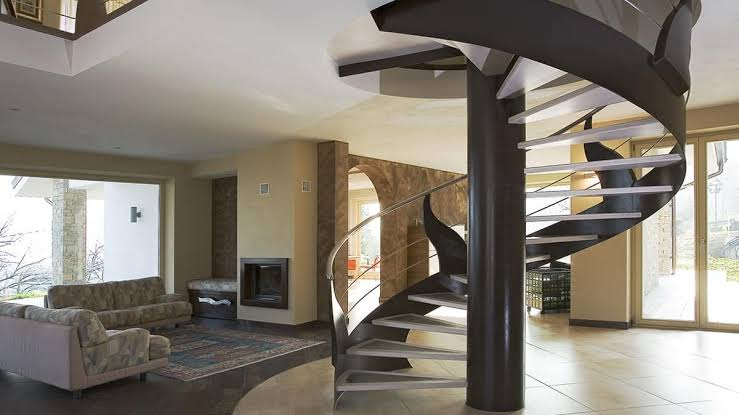
What are spiral stairs?
Spiral stairs follow a helical arc. They usually have a very compact design and the treads radiate around a central pole.
Advantages of Spiral Stairs:
- One of the key advantages of spiral stairs is their compactness. They are very popular on beach front decks where space is at a premium. They are also used extensively on city lofts for the same reason.
- Spiral stairs can be attractive and there are many variations on railings styles which can have a major impact on the overall appearance of the stair.
- Since the center pole and landing typically provide the structural support for the stairs, they do not need much in the way of extra support structures, making installation easier than with many other types of stairs.
Disadvantages of Spiral Stairs:
- Spiral stairs are more difficult to navigate than other types of stairs. It is for this reason that codes do not allow them to be used as the primary access to a full second floor of a home. Walk ability improves as the outside diameter gets larger, so if you have space, you may want to consider going a bit larger. We recommend going 5 feet in diameter if you can.
- It is difficult to carry large items up spiral stairs.
- Only one person can go up or down the stairs at the same time.
6. Curved Stairs
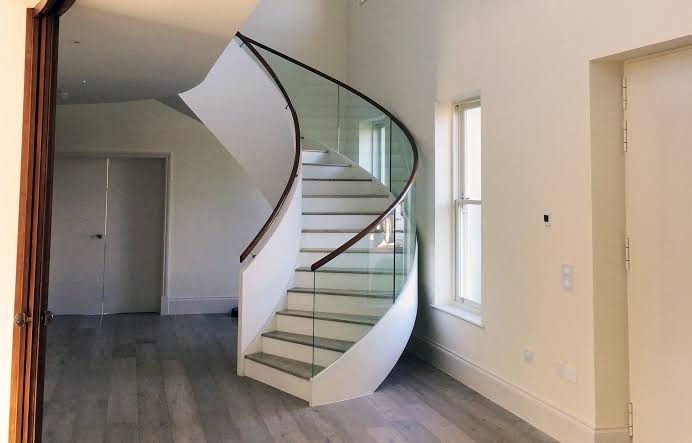
What are curved stairs?
Like spiral stairs, curved stairs follow a helical arc. However, they tend to have a much larger radius and typically do not make a full circle. Curved stairs add elegance to any home or business. For this reason, they are almost always located at the entry where they make the best first impression.
Read more: Role of Colors in Interior Design Services
Advantages of Curved Stairs:
- Curved staircases are often very elegant and traditional but this type of design can equally be adapted to contemporary architecture.
- They are relatively easy to walk up if the radius is large.
Disadvantages of Curved Stairs:
- Curved stairs are by far the most difficult to build of the various types of stairs. In fact, building curved stairs represents a pinnacle of achievement for any stair builder or fabricator. For this reason, they are the most costly to build.
7. Ladders

What are architectural ladders?
Ladders, like stairs, can serve as a means of access. However, building codes do not allow ladders to serve as a primary means of access. SPACEY can design custom ladders for applications such as libraries, lofts, and docks.
Advantages of Ladders:
- Ladders are the most compact way to get from one floor to another.
- They are very cost effective due to their simple design.
- Ladders may have wheels or fold up to move them out of the way when not in use or to prevent access.
- They can be used to access shelves that would be too high to reach normally.
Disadvantages of Ladders:
- Ladders are the most difficult to navigate than stairs, especially while descending.
- Ladders cannot be used as a primary staircase.
8. Split Staircase
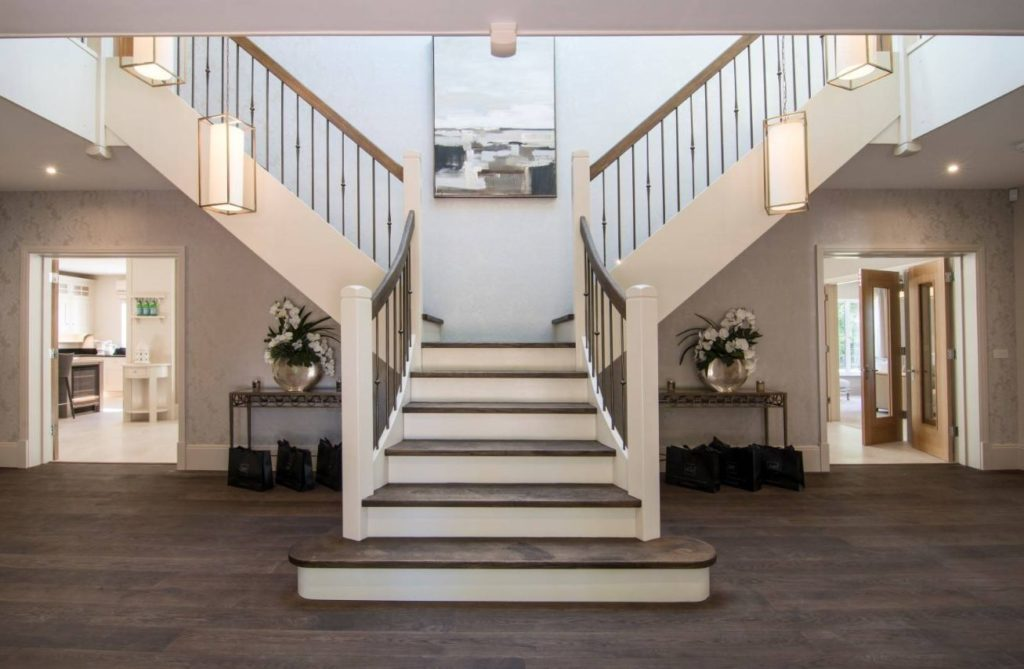
A split staircase originally called bifurcated is the grande dame of all staircases. Typically used in the entryway of a very grand and spacious home, the staircase starts with a wider flight at the bottom. Part of the way up, there is a generous landing with two narrower flights on either side of the bottom section one going left and the other going right. Large, expansive, and expensive, this is a design statement that is intended to make a big impression.
9. Floating Staircase

Usually a variation on a straight staircase, a floating staircase usually consists of treads with no risers. Instead, the treads themselves are attached to the wall in a way that the support is invisible, or at least minimally visible. Other times, glass or Plexiglas risers are used to achieve a floating appearance. The material used can be wood, but it is often something else like metal, glass, or stone. It is a contemporary look that often foregoes handrails, although glass can be used for safety instead of a traditional railing without sacrificing the open feeling. Again, any floating style must meet local building codes.
10. Storage Staircase

Large or small, almost any home can use more storage and the often-overlooked area underneath the stairs can be turned into valuable space for stashing necessities. The most common way to do this is by building cabinets underneath the risers instead of simply walling off space. A second way is to turn each riser into a drawer, which is the best option when you can’t make full use of the void underneath the staircase.


0 comments